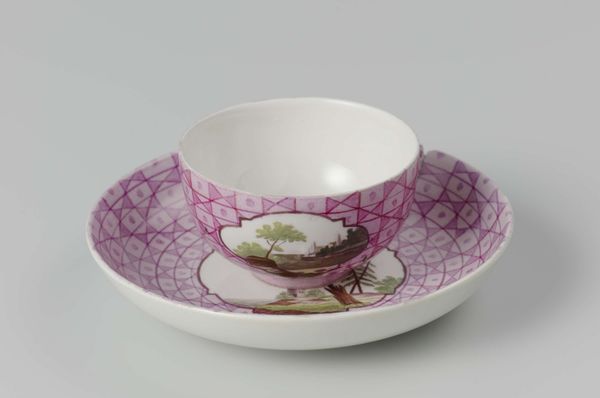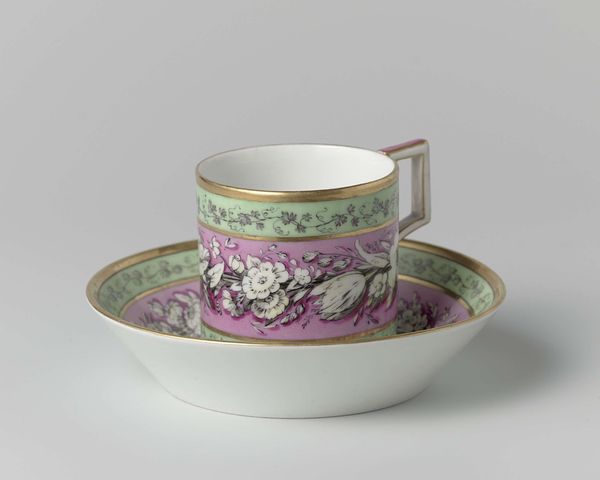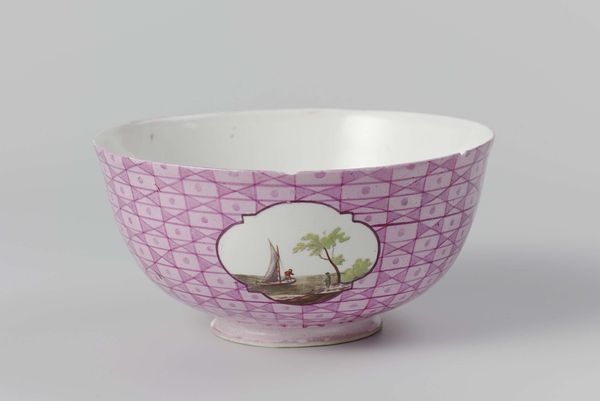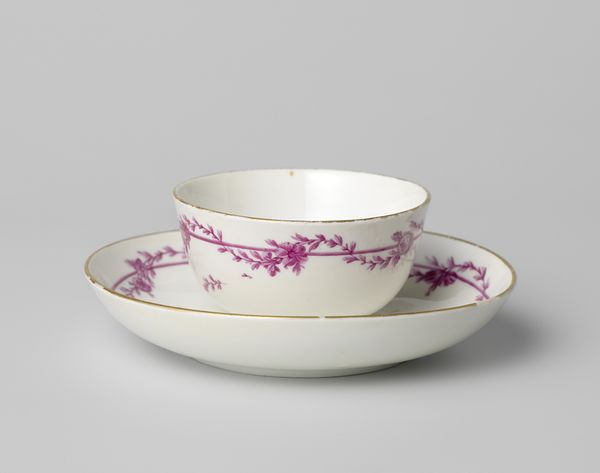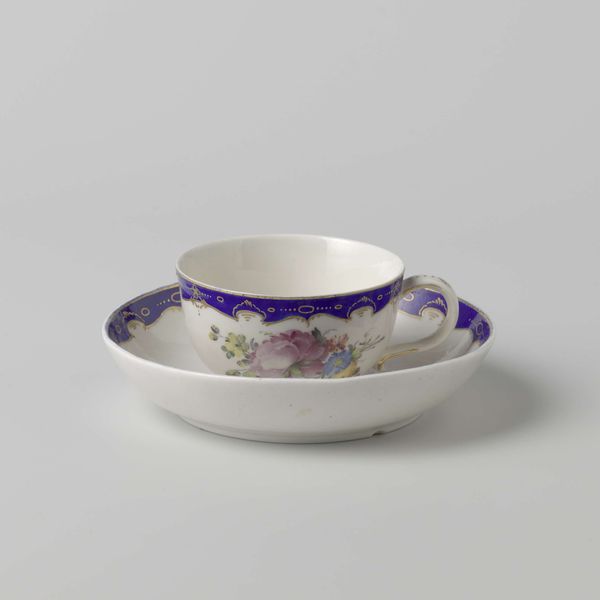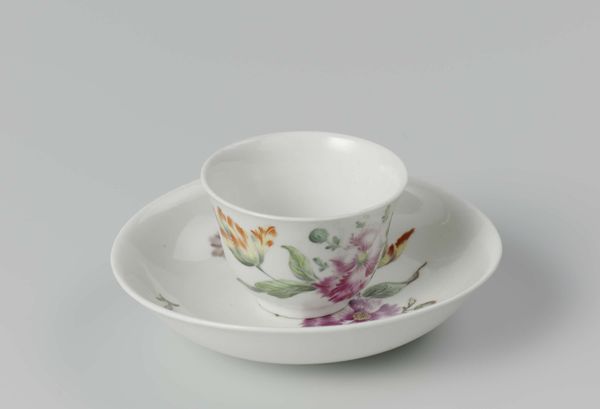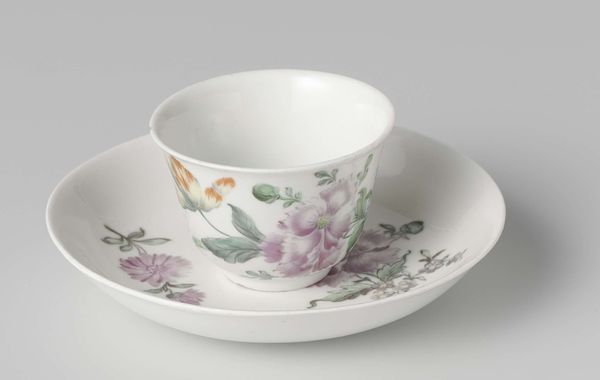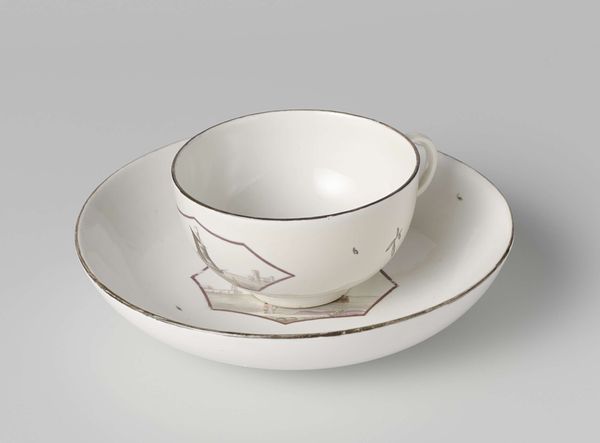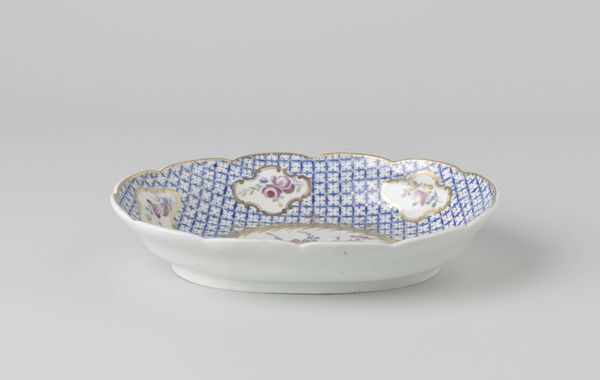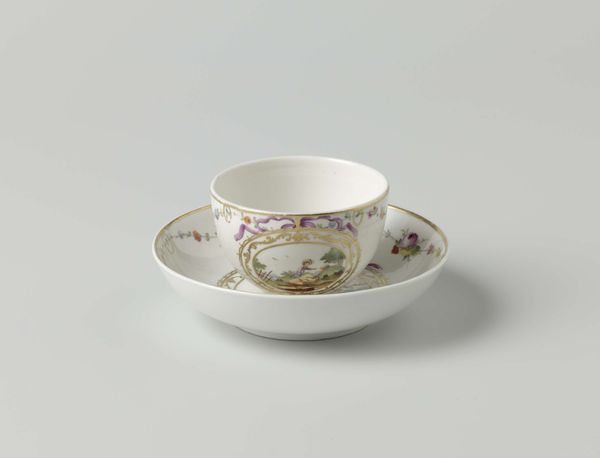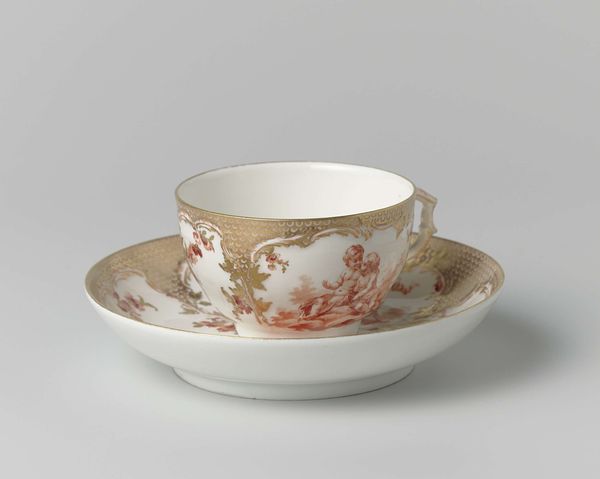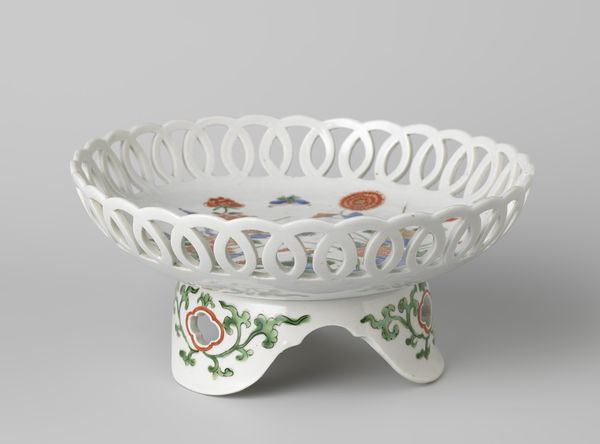
Kop en schotel met een veelkleurig landschap in een medaillon uitgespaard in een geometrisch patroon c. 1759 - 1771
0:00
0:00
ceramic, porcelain
#
landscape
#
ceramic
#
porcelain
#
geometric
#
rococo
Copyright: Rijks Museum: Open Domain
Editor: This is a porcelain teacup and saucer, dating back to between 1759 and 1771, made at the Weesper porcelain factory. What strikes me is the contrast: the central, rather charming landscape scene versus the quite bold geometric pattern in pink. What are your thoughts on how those two elements work together? Curator: It's a fascinating piece reflecting the socio-political currents of the late 18th century. We see the Rococo style’s love of nature manifested in the landscape medallion, but its placement within a rigidly geometric, almost industrial, pattern reveals a tension. How might the emerging emphasis on order and reason, hallmarks of the Enlightenment, be shaping the decorative arts and societal values at this time? Editor: I hadn't considered it that way – so the geometric pattern could represent this new rational worldview sort of trying to contain nature? Curator: Exactly. This isn’t simply decorative; it's a cultural dialogue. Think about the factory itself - the Weesper porseleinfabriek. The manufacture and consumption of porcelain were heavily influenced by class. Who do you imagine used such refined objects, and what did it signify for them? Editor: I would imagine only very wealthy individuals and that it was likely a status symbol. Curator: Precisely. The piece embodies both leisure and labor. It makes one ponder how these small everyday objects can offer large insight into their specific historical setting. Editor: Looking at it that way changes everything. Now I see that it's not just a pretty teacup, but really speaks volumes about the societal norms and emerging ideals of the period! Thanks for that! Curator: It’s a testament to the fact that even the most delicate objects can reveal the robust structures of history and power.
Comments
No comments
Be the first to comment and join the conversation on the ultimate creative platform.
